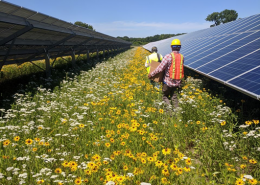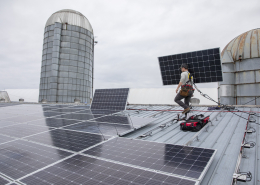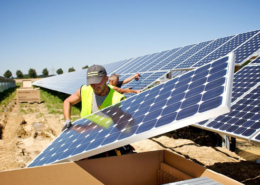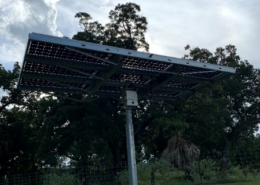
Case Study: A Pollinator-Friendly Solar Site in Minnesota that Manages Stormwater.
As we continue to deploy clean energy across the United States, more attention is being paid to how best to develop clean energy projects at the pace and scale that the climate crisis requires, while also ensuring that we are taking care of the sites and communities that host those projects.

Case Study: Vermont Farmers Access Clean Energy
Farmer-members of Organic Valley, a farmer-owned cooperative representing nearly 1,800 family farms, can now access renewable energy options for their operations. In Vermont, solar development company SunCommon has created a program to help…

Case Study: Saffron and Solar Farms
The North American Center for Saffron Research and Development is conducting a multi-year study of saffron crops grown under and adjacent to ground-mounted solar arrays. The study, which began in 2015, includes two years of field data from…

Monadnock Region Community Supported Solar Case Study
The Monadnock Region Community Supported Solar project in New Hampshire is bringing together farmers, investors, and champions with a goal of helping local farms realize the potential of the renewable energy economy.
Community-supported…
 Courtesy of Helical Solar
Courtesy of Helical Solar Helical Solar Case Study
As with most inventions, necessity drove James McKinion’s design for the Helical Solar dual axis, bifacial solar panel array. In 2016, McKinion wanted to maximize the area above cut pine trees for solar energy. However, it soon became apparent that the cost of bulldozing and clearing tree stumps was cost-prohibitive. He decided to engineer a solution.
